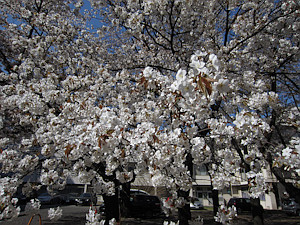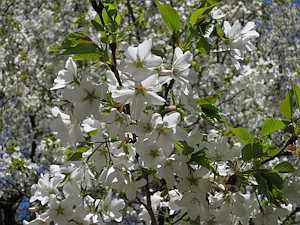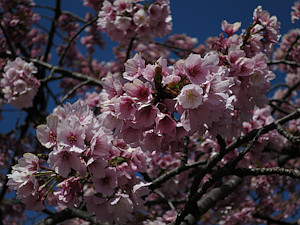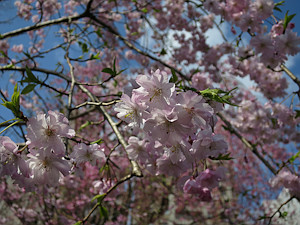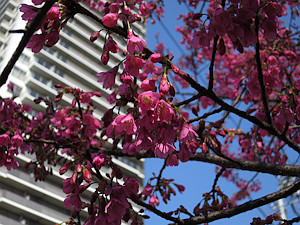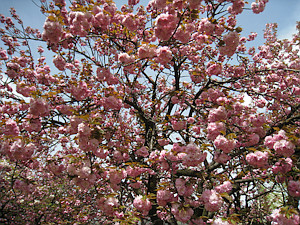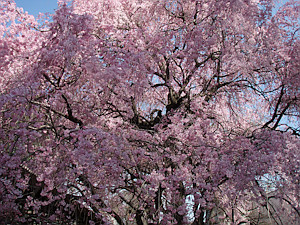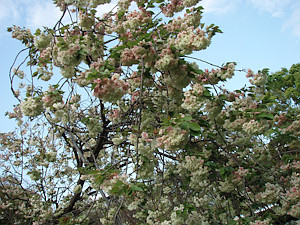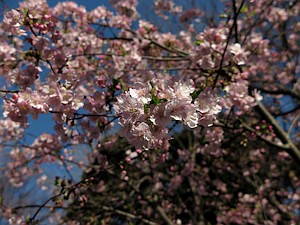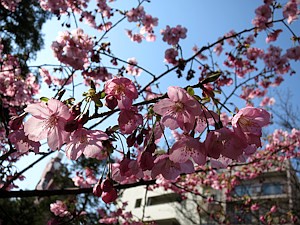Hanami
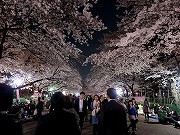 Hanami (花見) is a centuries-old popular custom of viewing cherry (sakura) blossoms in Japan, often accompanied by a party with alcohol drinks underneath the cherry trees.
Hanami (花見) is a centuries-old popular custom of viewing cherry (sakura) blossoms in Japan, often accompanied by a party with alcohol drinks underneath the cherry trees.
Cherry blossoms are regarded as the symbol of the arrival of the spring in this country, and weather forecasting companies compete fiercely to predict the exact dates of the blossoms around the nation, these dates being covered by the press and TV news.
Until 2009, the National Meteorological Agency itself had been providing the forecast, but as private firms entered this field, the agency pulled out from it and now only offers the declarations of cherry blossoms when they actually take place in each region.
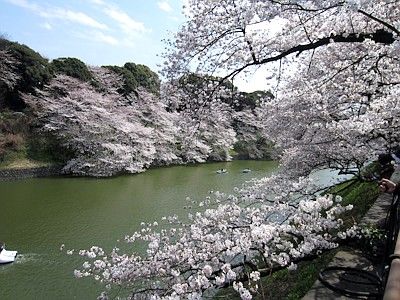
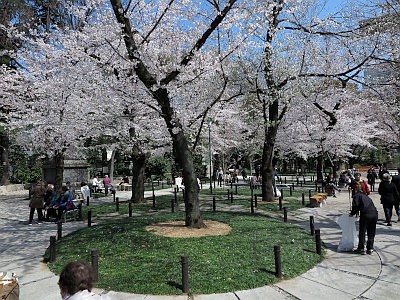
History
Though the word hanami is the combination of hana (flower) and mi (viewing), when you say hamami it usually means "viewing cherry flowers."
It is said to have started as flower viewing events by the aristocrats in the 8th century, though the most favored flowers in those days were those of Japanese (Chinese) apricots which originated in China.
But when the cultural influence of China decayed greatly after Japan stopped sending envoys there in the 9th century, native cherries gained a special status in Japanese high culture.
In the Edo Period (17th-19th century), this custom of enjoying cherry blossoms among elites began to be widely conducted even among the general public, and many areas became famous for this event. It is said that some 300 cherry cultivars already existed in this era (this number is now 600).
Somei-yoshino, a hybrid cultivar which eventually becomes overwhelmingly popular after WWII, was also selected out within present Tokyo probably at the end of this period. The fruit of these cherry species or cultivars are not suited for eating - they are small and don't taste good. It was after the feudal times ended that cherry species for eating fruit came to Japan from China and Europe.
Hanami in post-war Japan
Somei-yoshino began to be planted widely after WWII owing to its appearance.
Since this cultivar can't reproduce by themselves (they don't bear fruit much, and even if they did they wouldn't sprout - seeds with other species or cultivars may but then their offspring will of course not be a Somei-yoshino any more), so they are grown from cuttings, which means they are all genetically identical clones. For this reason, all the Somei-yoshino trees in an area will bloom simultaneously, and this is another reason this cultivar has gained so much popularity.
When they bloom, people flock together below the trees with friends, family members or co-workers to enjoy the flowers, often with foods and drinks, day or night. The periods of cherry blossoms differ a little between species and cultivars, but except for the southernmost and northernmost areas which are not suitable for Somei-yoshino, usually people enjoy Hanami event with this cultivar.
Aforementioned coverage of the blossoms by the media is also based on Somei-yoshino (except for the above exceptional areas, of course).
There are so many famous spots for Hanami because so many people enjoy this event.
One of the most famous and convenient places for a visitor to visit in central Tokyo is Ueno Park. You can walk through the park and observe people having fun under the trees whether day or night.
In this period (usually from the end of March to the begining of April), reddish lanterns are lit in the evening. Even after the lanterns are put out at 8PM people keep on enjoying with street lights. If you have time, head for JR Nippori Station from there to walk through Yanaka Cemetery.
Photos of hanami ata Ueno Park, Tokyo


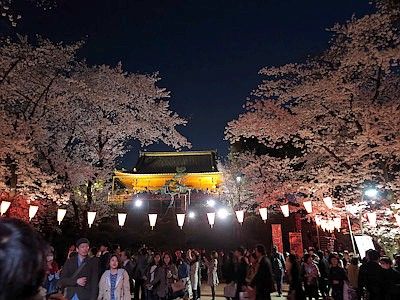
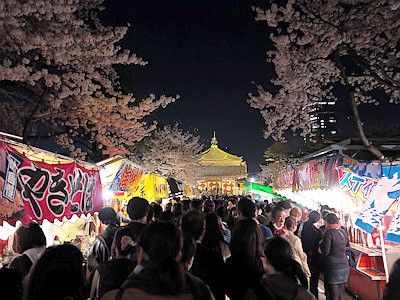
Cherry flowers in modern Japan
In modern Japan, since this period overlaps with the graduation from and admission into schools in most part of populous areas in Japan - graduation takes place at the end of March and admission at the beginning of April - it seems like this flower has been imprinted into people's minds from youth for generations in relation to these emotional events, amplified by continuous references made in novels, movies, manga, etc.
(By the way, it's not only schools but most of the organizations in this country, whether public or private, start and end in this period. So when you for example say "fiscal 2015", generally speaking it is from April 1 of 2015 to March 31 of 2016.)
